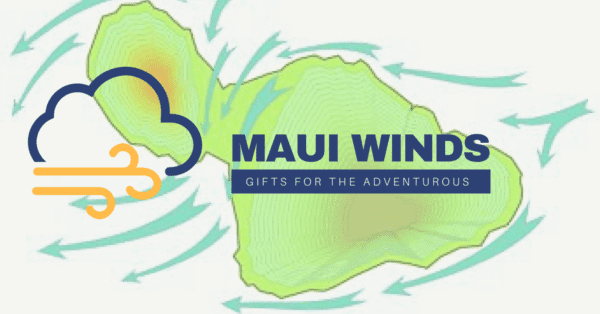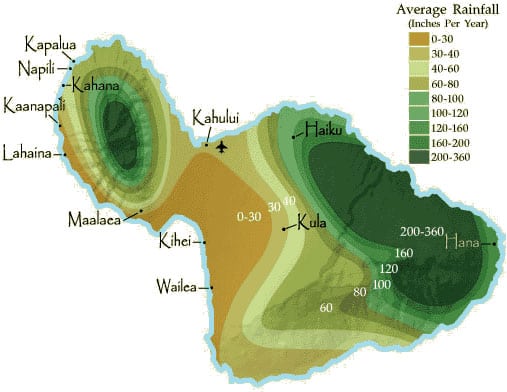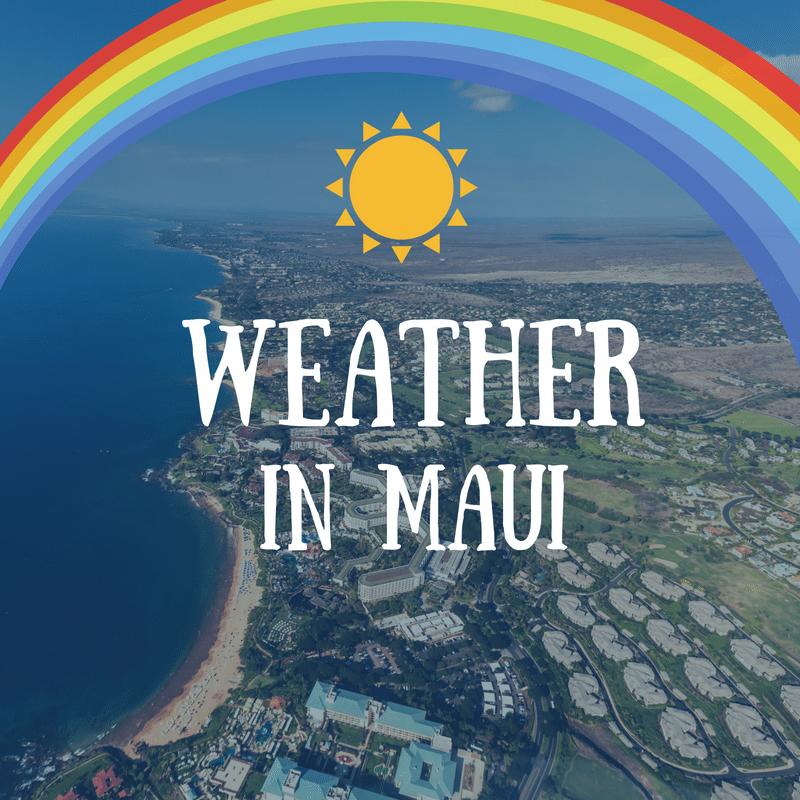Maui is one of the most beautiful islands in the world. Part of this comes from the pleasant weather that blesses Mauian land throughout the year. Maui sits on a unique combination of topology, geography, and climate. As a result, it often goes from tropical to uniform temperatures throughout the island.
The sub-regions experience different levels of rainfall – there are some like Kihei, Wailea, and Makena that keep dry, and some like Paia that are some of the wettest lands in Maui. Hence, it’s important to note that not all areas of Maui have similar weather patterns.
It’s always the best to consider your stay based on what you want to experience. There’s a strong marine influence on the climate of Maui. It is because half of Maui is located within 5 miles (8.0 km) of the island’s coastline. As a result, Maui experiences what’s known as micro climates. Don’t be surprised if you see massive cloud formation, steady trade-winds, and rainfall – all in one day. It also makes Maui one of the unique places to experience.

Weather at different places in Maui
Places like Makena, Wailea, and others around the south shore are some of the driest places in Maui. They are lively, host thousands of tourists, and are the center of Mauian attractions. Another unique place, in that case, is Lahania which stays dry all year round. If you are looking for accommodations, you’ll be glad to know that there’s no shortage in these areas of Maui. From luxurious resorts to cheap stays, these places have accommodations galore.
If you like dry weather and want to experience the Mauian culture, Makena, Wailea, Kihei, and Kahului are some of the surest places to go.

When you travel a little north, you’ll find places like Kaanapali and Kapalua. While Kannapali receives moderate rainfall, Kapalua can get drizzly at times.
However, both these places offer some stunning accommodations and the weather – if rainy – doesn’t last for a long time. If you like sunbathing by the beach, these might not be the perfect options. But if you don’t mind a colder climate that can get drizzly (sometimes), you are in for an absolute treat.
Places around Kula receive quite heavy rainfall. The hotel options are limited. However, the scenery is marvelous and breathtaking. Moving up to the northeast coastline, you’ll come across places like Paia that can receive close to 60” of rainfall every year. Some towns have as much as 160” of rainfall every year. Accommodations in these areas are slightly limited.
Weather in Maui – from January to December

January – Possibly one of the coldest months of the year. That said, you’ll keep seeing clear and warm days between the showery periods.
February – February sees some of the strongest winds of the year. Similar to January, the weather is cool with a tinge of warm days here and there. Best part: these are some of the best months to see the mighty humpback whales!
March – Kihei and Lahaina are warm and sunny. Northeast tradewinds bring showers from Haiku to Hana. March is the start of spring in Maui.
April – Spring enters Maui in full force with Strong tradewinds and few winter type storms all across Maui. Leeward areas are full of sunshine – perfect for chasing sunsets and getting on the beach for a relaxed time.
May – Maui starts witnessing summer; the air begins to get a little warmer than usual. Maui becomes a heaven for tourists in these months.
June – Maui and summer – in all its glory – accompany each other in June. Tradewinds blow every day. June is also one of the driest months of the year.
July – The weather remains similar to June with somewhat warm to very high temperatures in some areas. But you always have tradewinds by your side to cool things down in Maui.
August – Relatively humid. Waves are a small-medium in size – perfect for surf events all across Maui.
September – September is often the peak of summers in Maui. The land witnesses some of the highest temperatures of the year. The weather can get a little weird even for residents of Maui. However, there are parts of Maui that feature, peaceful, weather – the likes of which make it the best island on earth!
October – Large waves start entering Maui. It is the beginning of the fantastic winter months. Summer winds start getting cooler; the weather, a lot more pleasant than September.
November – November runs a mix of the best of both kinds of weather in the Mauian region. With summers almost over and winter beginning its stretch, November sees a lot of travelers from all across the world flock to our Mauian land to experience it in its full glory.
December – Gusty winds with showers here and there – December remains moderately pleasant . It still runs a great balance between warm and sunny days.
If you are planning to visit Maui soon – or even if it still sits in your bucket list – we hope this quick weather overview of Maui helps you make the most of your Mauian vacation. Mahalos!







